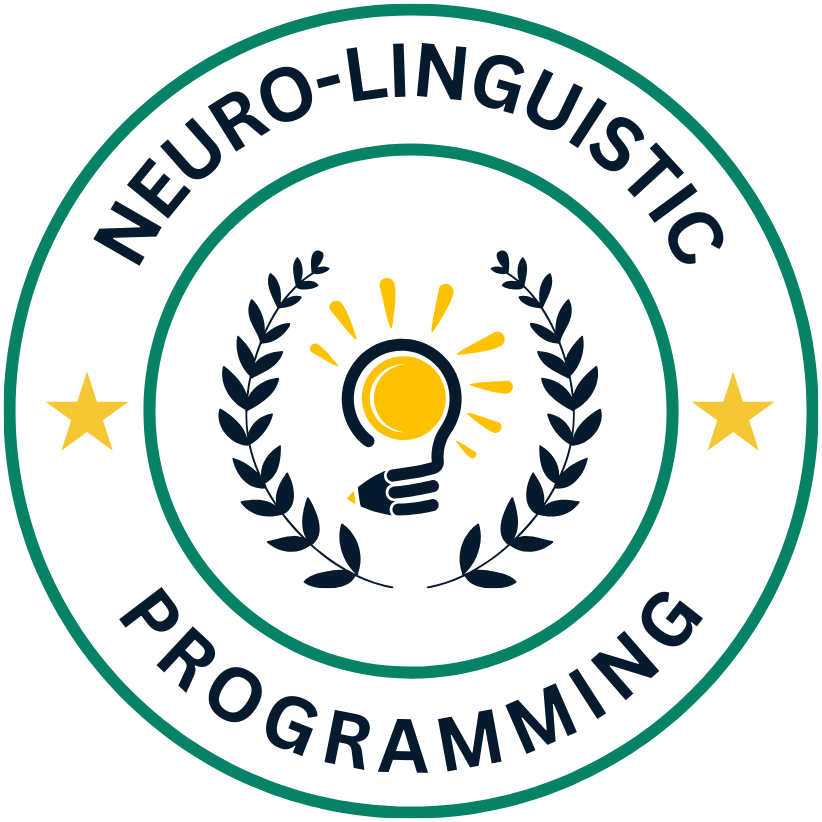Most people experience trauma and anxiety at some point in their lives, and these issues can significantly impact your emotional well-being. You may be seeking effective therapeutic solutions that can help you navigate these challenges. One approach gaining traction is Neuro-Linguistic Programming Therapy, which focuses on the connection between language, behavior, and the mind. In this blog post, we will explore how NLP can be a transformative tool in your therapeutic journey to address and heal from trauma and anxiety.
Understanding Trauma and Anxiety
A comprehensive understanding of trauma and anxiety is vital for overcoming these challenges in therapy. Trauma is often described as a deeply distressing or disturbing experience that significantly impacts your emotional and psychological well-being. Events such as physical or emotional abuse, accidents, loss of a loved one, or experiencing a natural disaster can trigger traumatic responses. It’s important to note that trauma is subjective; what may be traumatic for one person might not be for another, and your unique experiences and perceptions shape how you understand and react to trauma.
Definition of Trauma
Understanding trauma requires you to consider the types of responses it can elicit. You might experience symptoms such as flashbacks, hyper-vigilance, or numbness, which serve as protective mechanisms when your mind tries to cope with the overwhelming emotions involved. Recognizing these symptoms is the first step in addressing trauma effectively, enabling you to navigate its complexities with greater awareness and support.
Definition of Anxiety
With anxiety, you may find yourself struggling with persistent feelings of worry or fear that often feel beyond your control. It can manifest in various forms, such as generalized anxiety disorder, panic disorder, or social anxiety. These feelings can become overwhelming and may interfere with your daily life, impacting your relationships, work, and overall quality of life. Understanding the triggers and symptoms of your anxiety is fundamental in seeking effective treatment and management.
This emotional response stems from your brain’s instinct to protect you from perceived threats, which can sometimes lead to disproportionate fears or anxieties. Many people experience anxiety symptoms that range from physical reactions, like a racing heart or sweating, to cognitive distortions, which may involve negative thought patterns. By identifying these patterns, you can work on strategies to mitigate anxiety and cultivate a sense of calm in your life.
The Role of NLP in Therapy
Even in psychology, there has been a growing interest in how Neuro-Linguistic Programming (NLP) can serve as a powerful tool in therapy. As a client, you may find that NLP techniques can provide unique insights and strategies for overcoming trauma and anxiety. By focusing on the interconnectedness of your thoughts, language, and behaviors, NLP helps you reframe your experiences and develop healthier patterns. Therapists skilled in NLP can guide you through various techniques to facilitate deeper self-awareness and personal growth.
Overview of NLP Techniques
Around the world of NLP, several key techniques stand out as effective ways to address emotional distress. One popular method is reframing, which enables you to view a situation from a different perspective, transforming negative emotions into more manageable responses. Another technique is anchoring, where you create a mental link between specific feelings and alternative stimuli, allowing you to summon positive emotions when needed. Additionally, visualization techniques can help you mentally rehearse desired outcomes, thus reducing anxiety and fostering a sense of control.
NLP vs. Traditional Therapeutic Approaches
Overview of various therapeutic approaches reveals that NLP diverges significantly from more conventional methods such as cognitive-behavioral therapy (CBT) and psychodynamic therapy. While traditional approaches often rely on extensive analysis of past experiences and cognitive restructuring, NLP tends to focus on immediate change and practical strategies. This difference can be particularly beneficial for clients like you, who may seek quicker relief from symptoms like anxiety or trauma.
Understanding the distinctions between NLP and traditional therapeutic methods can empower you in your journey toward healing. While traditional therapies often require longer-term commitment and may examine deeply into your past, NLP aims for immediate shifts in perception and behavior. This dynamic can be appealing, especially if you feel overwhelmed by the weight of your experiences. Both methodologies can be integrated effectively, allowing you to choose a path that resonates with your needs and preferences in therapy.
How NLP Addresses Trauma
You may find that Neuro-Linguistic Programming (NLP) provides powerful strategies for addressing trauma by transforming your perception of past experiences. NLP operates on the principle that language and patterns of thought influence behavior and emotional responses. This allows you to reframe and reprocess traumatic memories in a way that alleviates their emotional grip, enabling a shift in how you recall and relate to those events in your life. With its focus on easier techniques for swift change, NLP can be an asset in your therapeutic journey.
Techniques for Reprocessing Traumatic Memories
Before delving into the mechanics of NLP, it’s vital to understand that certain techniques are specifically designed to help you reprocess traumatic memories. One such approach is known as the Timeline Therapy™ technique. This method permits you to visualize and revisit key moments in your past, but with the added advantage of modifying the emotional weight attached to those memories. By visualizing your timeline, you can identify specific events, access the accompanying emotions, and then work through those feelings in a safe and controlled manner. This shifts your experience from a victim’s mindset to one of empowerment and healing.
Building Resourceful States
For you to navigate through trauma effectively, building resourceful states becomes pivotal. NLP gives you tools to access positive emotional states that foster resilience and confidence. Techniques such as anchoring, where you connect a specific emotion with a physical gesture or word, can create a quick pathway for you to tap into feelings of calm and strength when faced with anxiety triggers or distressing memories. By repeatedly practicing these methods, you enable yourself to harness resourceful states on demand, thus empowering your therapeutic process.
Another strategy involves visualizing a “resourceful you,” where you embody qualities that help manage stress and anxiety. You can engage in imagery techniques to see yourself in the desired state, fostering a strong self-image that reflects your capabilities. This internal representation becomes a powerful ally, as you can invoke those feelings whenever needed, providing you with a consistent source of motivation and emotional stability during challenging times.
Addressing Anxiety with NLP
Many individuals struggling with anxiety often find themselves trapped in cycles of negative thoughts that perpetuate their emotional distress. By utilizing Neuro-Linguistic Programming (NLP) techniques, you can effectively identify and reframe these negative thought patterns. This process involves recognizing the specific thoughts that trigger your anxiety and consciously shifting your perspective on these thoughts. For instance, if you frequently think “I can’t handle this situation,” NLP encourages you to replace that thought with a more empowering statement, such as “I have the skills to deal with this.” This shift can create a significant difference in how you respond to stressful situations, leading to more constructive outcomes in your daily life.
Reframing Negative Thought Patterns
After uncovering the roots of your anxious thoughts through NLP, the next step is to reframe them into more positive and productive perspectives. This technique involves taking a negative statement and transforming it into a statement that promotes personal growth and resilience. By engaging in this practice, you can shift your mindset, thus diminishing anxiety’s hold on your life. You will learn to acknowledge your worries without letting them dominate your thoughts, creating space for more balanced and rational decision-making. Adopting this new perspective can ultimately empower you to feel more in control, helping you navigate emotionally challenging situations with greater ease.
Anchoring Positive Emotions
Anxiety can often overshadow your ability to feel positive emotions. Utilizing NLP to anchor positive feelings enables you to create mental associations that can be accessed during moments of heightened anxiety. This technique involves recalling a moment when you felt completely at ease or joyful and physically anchoring that feeling. For example, while recalling this memory, you might squeeze your thumb and forefinger together. By repeating this exercise, you train your brain to associate the physical gesture with the positive feelings, allowing you to summon that calmness when faced with anxious situations. This method not only aids in alleviating anxious feelings but also reinforces a sense of inner strength that can be invaluable during tough times.
Consequently, anchoring provides you with a tool to counteract anxiety on-demand, reshaping your experience in challenging situations. By consciously connecting with these positive emotions, you are better prepared to handle stressors and can maintain a more balanced emotional state. This practice encourages emotional resilience, allowing you to approach life’s challenges with increased confidence and certainty. Through these NLP techniques, you can redefine how you respond to anxiety, ultimately fostering a deeper sense of peace and stability within yourself.

Case Studies: NLP in Action
To understand the effectiveness of NLP in therapy, it is crucial to look at real-world applications and their outcomes. Numerous case studies have documented positive results in clients overcoming trauma and anxiety through NLP techniques. Here are some noteworthy examples:
- Case Study 1: A 32-year-old woman with a history of childhood trauma reported a 70% reduction in anxiety symptoms after five sessions using NLP techniques focused on reframing negative memories.
- Case Study 2: A 45-year-old man suffering from PTSD-related panic attacks experienced a 50% decrease in frequency and intensity of attacks following a series of NLP visualization exercises over three months.
- Case Study 3: A teenager with social anxiety showed significant improvement in her ability to engage with peers, achieving an 80% reduction in anxiety during social situations after applying anchoring techniques over four sessions.
- Case Study 4: A 25-year-old athlete with a fear of public speaking utilized NLP methods to develop confidence, leading to marked improvement in performance during presentations, with a reported increase from 20% to 90% in speaking comfort level.
Success Stories from Therapy
At the heart of these case studies are the individual success stories that illustrate the transformative potential of NLP. Clients have found renewed hope and empowerment through techniques that enable them to restructure their thought patterns and tackle deep-seated anxieties. For instance, one client who was incapacitated by fear of a painful event from their past utilized NLP to redefine their perception, leading to a sense of liberation and emotional healing.
This personal transformation is not just anecdotal; it is backed by data indicating a significant portion of clients report a notable improvement in their conditions after engaging in NLP therapy. Your journey through trauma and anxiety can be shaped by these techniques, allowing for a more robust therapeutic experience that addresses the roots of your challenges.
Potential Limitations of NLP
Across the field of NLP, you may encounter various limitations that can affect its applicability in therapy. While many clients report success, the effectiveness of NLP can vary from individual to individual. You might find that certain techniques resonate more with some clients and less with others, leading to inconsistencies in outcomes. Additionally, not everyone may respond positively to NLP interventions, highlighting a need for a personalized approach to therapy.
It is also important to consider that while NLP can be an effective tool, it may not address all aspects of trauma and anxiety. Emotional and psychological complexities vary for each person; therefore, relying solely on NLP could overlook other therapeutic methods that could be beneficial, such as cognitive-behavioral therapy or mindfulness practices. Ensuring a holistic approach in your therapeutic journey could be key to addressing your unique needs.
Integrating NLP with Other Therapeutic Modalities
Despite the powerful capabilities of Neuro-Linguistic Programming (NLP) in addressing trauma and anxiety, the integration of NLP with other therapeutic modalities can enhance your overall therapeutic experience. You may find that combining NLP techniques with cognitive-behavioral therapy (CBT), mindfulness practices, or somatic therapies can create a more holistic approach. Each modality brings its unique strengths, allowing you to benefit from the diverse perspectives and techniques available. This synergistic approach can deepen your understanding of your experiences and foster more effective strategies for achieving emotional well-being.
Complementary Approaches
Below the surface of each individual therapy lies a wealth of complementary approaches that can support and enrich your healing journey. Consider how mindfulness can partner with NLP; these practices can help you become more aware of your thoughts and feelings, enabling you to reshape limiting beliefs in real time. Similarly, the teachings from somatic therapies can help you connect with your body’s responses to trauma and anxiety, providing you with a deeper insight that can be integrated into your NLP sessions. Implementing these complementary methods can enhance the effectiveness of your therapy, leading to more lasting results.
Importance of Customization in Therapy
Beside the various approaches available, one important element in therapy is customization. Tailoring your therapeutic experience to meet your specific needs and preferences can significantly impact the success of your treatment. You are not a one-size-fits-all case; your experiences, triggers, and coping mechanisms may differ greatly from those of others. By working with your therapist to create a personalized plan that integrates NLP with other techniques that resonate with you, you can ensure a more meaningful process and facilitate deeper healing.
It is imperative to actively engage in discussions with your therapist about the customization of your treatment plan. By sharing your preferences and experiences, you empower your therapist to develop a strategy that best suits you. This collaborative approach fosters a stronger therapeutic alliance, allowing you to feel more connected and supported throughout your healing journey. Emphasizing the importance of customization can ultimately lead to improved outcomes and a greater sense of agency in your recovery process.
To wrap up
Upon reflecting on the role of NLP in therapy, you may realize its potential in helping clients navigate trauma and anxiety. By employing techniques such as reframing, anchoring, and language patterns, you can facilitate a shift in your clients’ perceptions and emotional responses. This can empower them to rewrite their narratives, not just about their past experiences, but also about their future possibilities. Through this process, you can assist your clients in developing greater resilience and coping strategies, allowing them to feel more in control of their thoughts and emotions.
As you explore the integration of NLP into your therapeutic practice, consider how it can complement existing modalities. You can create a more holistic approach that addresses both the cognitive and emotional aspects of trauma and anxiety, ultimately fostering healing and personal growth. By equipping yourself with these tools, you may enhance your effectiveness in guiding clients toward a more fulfilling and balanced life, where anxiety and trauma no longer hold them back from achieving their goals and dreams.
FAQ
Q: How can NLP techniques be applied in therapy to help clients deal with trauma and anxiety?
A: NLP techniques can be highly effective in therapy by helping clients reframe their traumatic experiences and change their emotional responses. Techniques such as anchoring can help clients associate positive emotions with specific triggers, while modeling can assist them in adopting coping strategies observed in others. Additionally, language patterns used in NLP can facilitate more supportive self-talk, promoting a mindset conducive to healing.
Q: What are the specific NLP strategies therapists use to assist clients with trauma and anxiety?
A: Therapists utilize several NLP strategies for clients dealing with trauma and anxiety. One common approach is the “swish” technique, which helps clients shift their focus from negative imagery associated with trauma to more positive or empowering scenarios. Reframing is another strategy that encourages clients to view their situations from a different perspective, aiding in the reduction of anxiety. Additionally, visualization exercises can help clients mentally rehearse positive outcomes, which may alleviate anxiety about future interactions or situations.
Q: Can NLP be effectively integrated with other therapeutic modalities for treating trauma and anxiety?
A: Yes, NLP is often integrated with other therapeutic modalities, such as cognitive-behavioral therapy (CBT) or mindfulness approaches. This holistic integration allows therapists to offer a richer therapeutic experience, utilizing the strengths of each approach. For instance, while CBT focuses on changing negative thought patterns, NLP can enhance this by modifying how clients perceive their trauma through language and imagery techniques. Such combined approaches can lead to more profound insights and empower clients on their healing journey.



